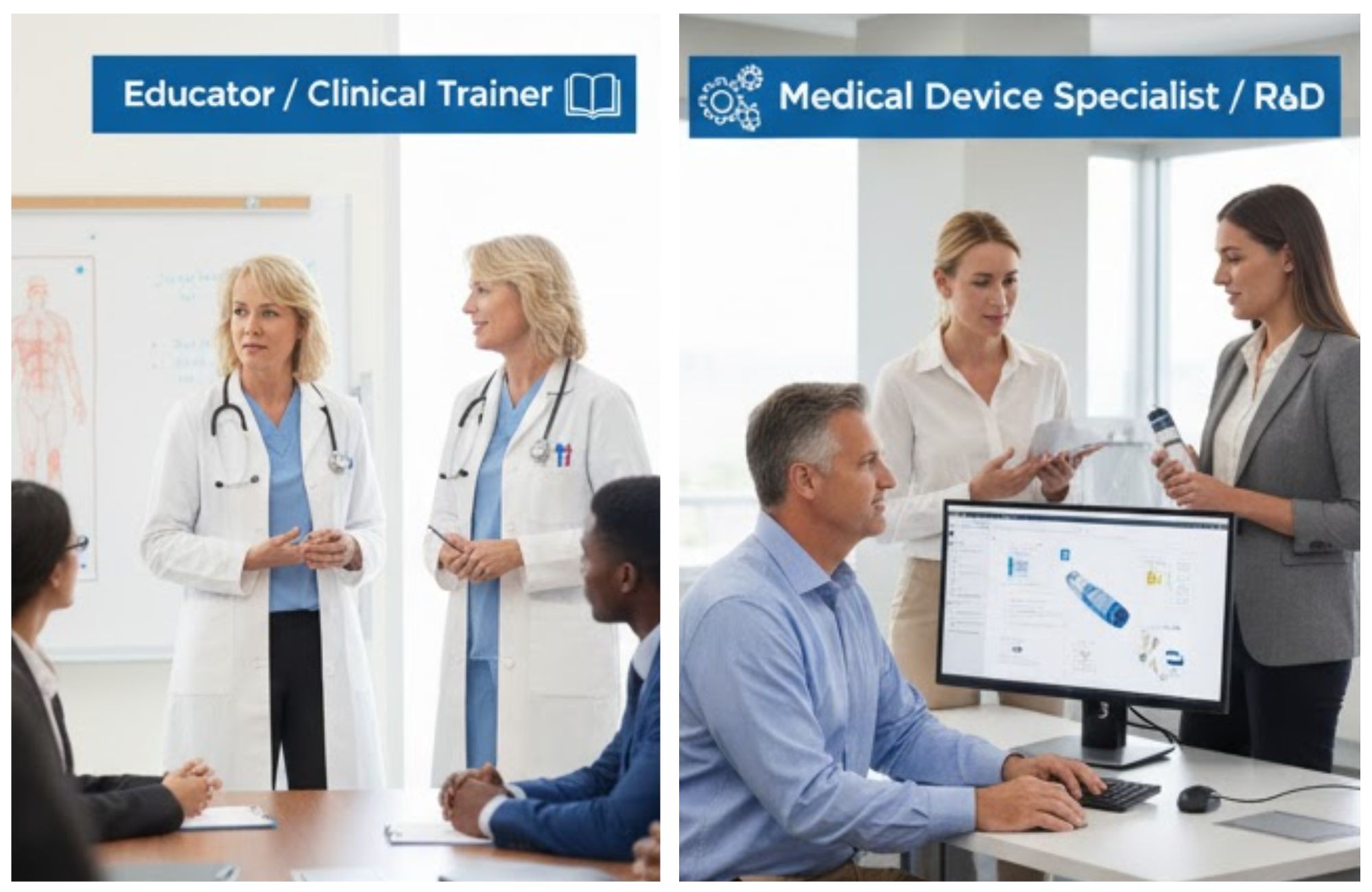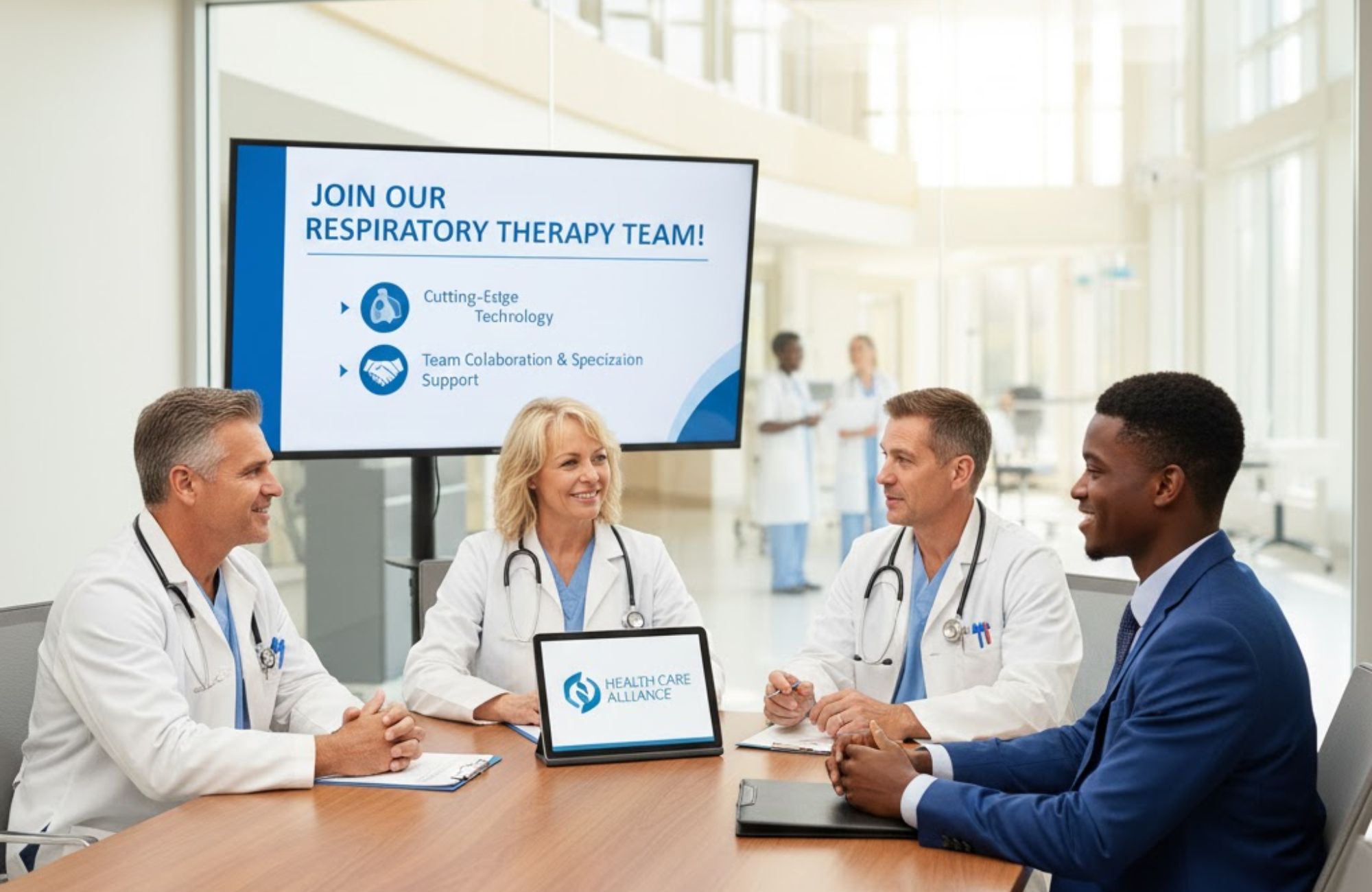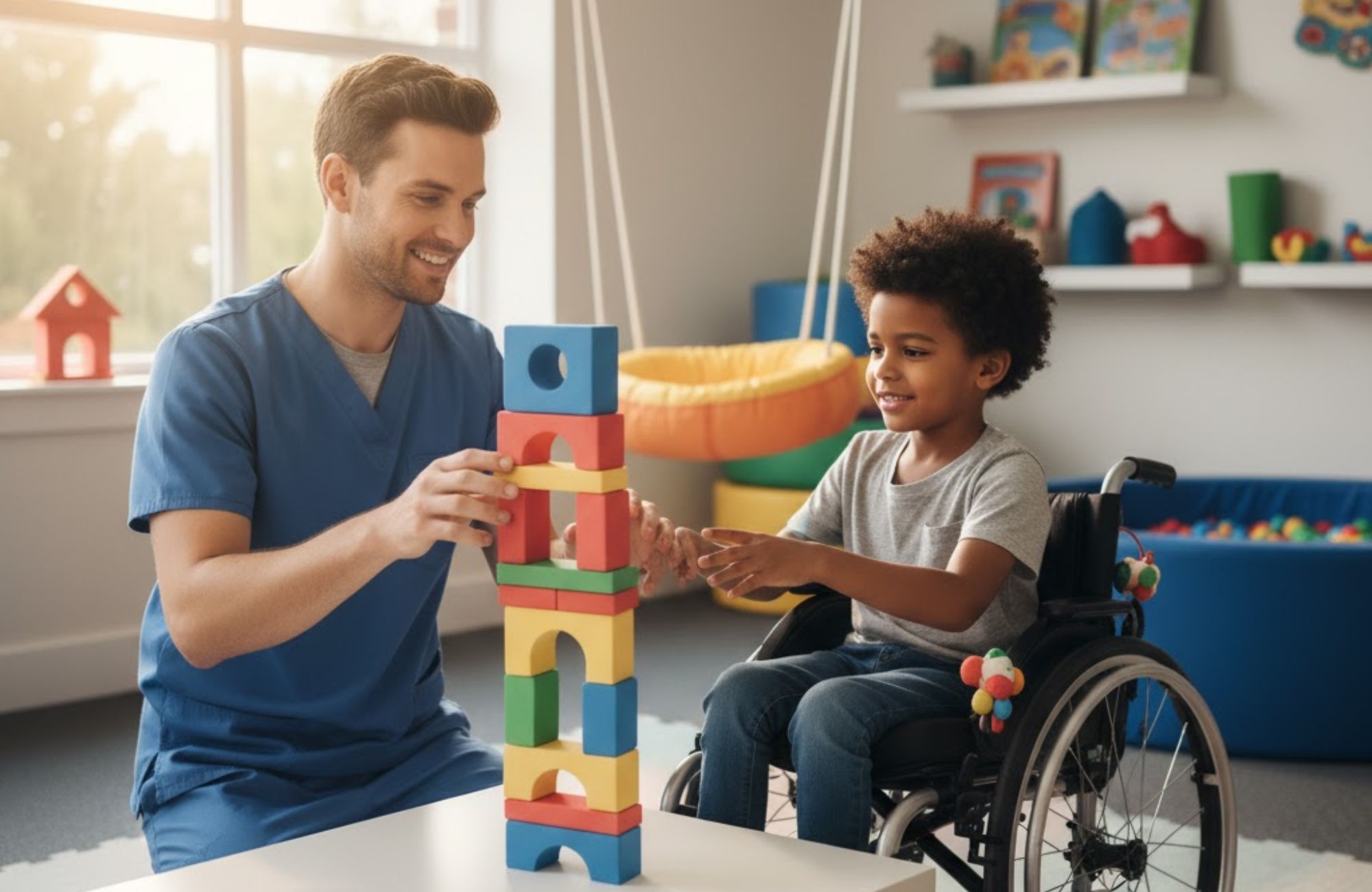Speech language pathologist jobs are in high demand across hospitals, schools, and rehabilitation centers. Professionals are needed to help children and adults improve their ability to speak, hear, and communicate. Flagstar Rehab connects licensed SLPs with trusted employers and offers support for licensure, career development, and flexible placements.
In this article, you will learn about the types of SLP roles available, the skills and qualifications required, and how Flagstar Rehab helps professionals secure premium positions. You will also discover career resources, mentorship opportunities, and guidance for both new graduates and experienced SLPs.
Who We Hire and Where You Can Work
Flagstar Rehab places speech language pathologists (SLPs) across hospitals, school districts, rehabilitation centers, and private practices nationwide. We work with clinical fellows, new graduates, and experienced SLPs, matching professionals to positions where their skills make the greatest impact.
Common placements include:
- Hospitals: Acute care, outpatient rehabilitation, and post-stroke programs for adults and children
- Public Schools: Pre-K through high school students in need of speech and language evaluations
- Skilled Nursing Facilities: Treatment for adults with dementia or swallowing disorders
- Outpatient Clinics: Voice therapy, stuttering programs, and articulation support
- Teletherapy: Remote services for children and adults across multiple states
We support full-time, per diem, and temp-to-perm positions, allowing each SLP to find a role that fits their career goals and preferred work environment.
High-Demand Environments
SLPs are essential members of interdisciplinary teams across many settings. Facilities actively seeking SLPs include hospitals managing stroke recovery and swallowing disorders, public schools serving children with developmental disabilities, outpatient programs for adults with voice or fluency disorders, and home health agencies supporting clients with dementia or other neurological conditions.
According to the U.S. Bureau of Labor Statistics, employment of speech-language pathologists is projected to grow 15 percent from 2024 to 2034, which is much faster than the average for all occupations. About 28,200 new jobs are expected to be added nationwide over this period. The median annual wage for speech-language pathologists in 2024 was $95,410, reflecting the stability and value of this profession.
Why Flagstar Rehab for SLP Careers
Flagstar Rehab partners with healthcare employers across multiple states to place SLPs quickly. Our process matches each professional with the right role based on interests, skills, and preferred environment. We manage scheduling, credentialing, and communication with employers.
Key benefits include:
- Competitive pay based on experience and setting
- Streamlined placement for faster hiring
- Access to public and private schools, hospitals, and clinics
- Roles for new graduates and experienced SLPs
Support That Advances Your Career
Our team helps SLPs grow through ongoing mentorship, credentialing assistance, and leadership opportunities. We provide guidance through state licensing requirements, interview preparation, and resume feedback. Clinical fellows and new graduates receive structured supervision to support their professional development.
We also offer continuing education and access to professional resources to help SLPs maintain and expand their skills. Flagstar Rehab also manages administrative tasks such as documentation, pay, and compliance, allowing you to focus on delivering high-quality patient care.
Learn more about Flagstar Rehab’s speech and language pathology services, including available roles and professional resources, on our Speech and Language Pathology page.
What You Will Do Day to Day
SLPs evaluate and treat patients with communication disorders and swallowing disorders. They work closely with families, teachers, and other healthcare workers to improve functional communication.
Common responsibilities include:
- Performing speech, language, and hearing evaluations
- Developing treatment plans for children and adults
- Conducting therapy for stuttering, voice, and cognitive-communication issues
- Providing education to parents, teachers, and employers
- Maintaining accurate data and progress reports
Settings and Caseload Examples
SLPs at Flagstar Rehab serve diverse populations across different environments:
| Setting |
Patient Focus |
Example Duties |
| Public Schools |
Students with developmental delays |
Speech and language therapy, IEP participation, and teacher collaboration |
| Hospitals |
Adults with stroke or brain injury |
Swallowing evaluations, communication retraining |
| Outpatient Clinics |
Voice or fluency disorders |
Individual therapy and progress tracking |
| Skilled Nursing Facilities |
Adults with dementia |
Cognitive-communication support and swallowing therapy |
Skills That Help You Stand Out
Employers seek SLPs who can deliver accurate assessments and communicate effectively with teams and families. Strong communication skills and professional collaboration are critical for success.
Essential abilities include:
- Building rapport with patients and families
- Conducting thorough evaluations and documentation
- Determining appropriate treatment goals
- Coordinating with teachers, audiologists, and other professionals
Specialized Interests
SLPs often develop special interests that enhance career growth. These may include augmentative and alternative communication (AAC), pediatric speech and language disorders, swallowing and feeding programs, neurogenic communication following stroke or dementia, and voice rehabilitation for adults and performers.
Education, Licensure, and Experience
All speech language pathologists must hold a master’s degree in speech language pathology from an accredited university. Additional requirements include completing a supervised clinical fellowship, passing the National Praxis Exam, and obtaining a state license, along with any current certifications.
What Hiring Teams Look For
Employers seek SLPs who maintain accurate records, follow treatment plans, and demonstrate commitment to professional growth. Hiring priorities include conducting reliable evaluations and tracking data. SLPs must maintain effective communication with team members. They should complete the required documentation and follow-up. Flexibility in working across different environments and age groups is also important.
Early Career Path: Clinical Fellows
Clinical fellows receive mentorship and structured supervision during their first year of practice. Flagstar Rehab offers:
- Regular check-ins with licensed supervisors
- Guidance on documentation and evaluations
- Templates for reports and progress notes
- Opportunities to explore multiple settings before committing to a specialty
This support allows clinical fellows to develop strong communication and clinical skills while building confidence as professionals.
Advanced Practice Pathways
SLPs seeking to expand their career can take on roles that develop leadership and specialized expertise.
Grow Into Leadership
Experienced SLPs can advance into leadership and management roles through Flagstar Rehab’s network of employers. Opportunities include lead therapist positions overseeing clinical teams. Program coordinator roles are available for voice and swallowing clinics. SLPs can also participate in quality improvement projects within hospitals or schools.
Specialty Focus Areas
SLPs can specialize in areas that align with personal interests and employer needs. Specialties include swallowing and feeding in hospital settings, post-stroke communication rehabilitation, pediatric developmental programs in schools, and dementia communication management in skilled nursing facilities.
Pay, Benefits, and Scheduling
Compensation for speech-language pathologists (SLPs) varies by state, setting, and experience level. According to the 2023 ASHA Health Care Survey, the median hourly pay for full-time SLPs is as follows:
| Setting |
Average Hourly Pay |
Typical Annual Pay |
| Schools |
$40–$48 per hour |
$78,000–$95,000 |
| Hospitals |
$43–$52 per hour |
$85,000–$105,000 |
| SNFs |
$42–$50 per hour |
$82,000–$100,000 |
| Home Health |
$45–$55 per hour |
$90,000–$110,000 |
Full-time positions include benefits such as health insurance, paid leave, and professional development support.
Disclaimer: The pay ranges listed above are estimates based on national survey data. Actual compensation may vary depending on location, employer, experience, and role. Contact Flagstar Rehab directly for accurate, up-to-date salary information for specific positions.
Schedules That Fit Your Life
At Flagstar Rehab, we help SLPs find schedules that meet personal and family needs. Options include school calendar positions aligned with holidays, four-day workweeks in clinics or home health, and remote teletherapy roles for flexibility across states.
How to Apply and Join Flagstar Rehab
Applying for a speech-language pathologist position through Flagstar Rehab is quick and direct.
Steps:
- Visit the official Flagstar Rehab site and view the current SLP job listings.
- Submit your resume and preferred state or setting.
- A recruiter contacts you to discuss positions that match your skills.
- Complete credentialing and onboarding for your selected role.
To apply, you will need an updated resume and copies of your license, a sample evaluation or plan of care, professional references, and your availability for interview times.
Interview Tips and Practical Assessments
Interview questions often focus on patient care, evaluation accuracy, and teamwork. Examples include how you determine treatment goals for students or adults, the steps you follow when performing a swallowing evaluation, and how you communicate therapy progress to parents or teachers.
Prepare for practical discussions by reviewing bedside swallow screening steps, fluency and stuttering severity tools, and basic voice therapy protocols and exercises.
If you are seeking SLP jobs in New York, Flagstar Rehab provides access to hospitals, schools, and rehabilitation centers across the state. Check out our Speech Language Pathologist Staffing page to view current openings and apply for roles that match your skills and career goals.
Tools and Resources
Access practical tools and guidance to support both SLPs and healthcare employers in managing careers and staffing effectively.
For SLPs
Flagstar Rehab offers a full resource library for professional growth. Resources include continuing education links, sample documentation templates, CEU and licensing information by state, and access to job alerts and salary updates.
For Employers
Healthcare facilities can post jobs or request qualified SLP candidates directly. Flagstar Rehab maintains active databases of licensed SLPs, provides metrics on average fill times and retention rates, and offers dedicated support for onboarding and scheduling.
Conclusion
Speech language pathologist jobs offer meaningful careers helping children and adults improve their communication, speech, and swallowing abilities. Flagstar Rehab connects qualified SLPs with hospitals, schools, outpatient clinics, and rehabilitation centers, providing support for licensure, clinical fellowship supervision, and career growth. By joining Flagstar Rehab, professionals gain access to flexible placements, competitive pay, and opportunities to work with dedicated teams across multiple settings, all while making a tangible difference in the lives of patients and families.
Take the next step in your SLP career by joining Flagstar Rehab. Apply today to explore premium full-time, part-time, and flexible roles in hospitals, schools, and rehabilitation centers. Employers seeking licensed and experienced SLPs can also contact Flagstar Rehab to request top-tier candidates, ensuring your team is supported by skilled professionals committed to quality care.
FAQs
What do speech-language pathologists do?
SLPs assess, diagnose, and treat communication disorders in children and adults. They evaluate speech, language, voice, hearing, and swallowing, and develop individualized treatment plans. They also collaborate with families, teachers, and healthcare professionals to improve communication and functional abilities.
What is the highest-paying job as an SLP?
The highest-paying SLP positions are in hospitals, private clinics, and specialized rehab centers. Leadership roles like lead SLP, program coordinator, or department director also earn higher salaries. Full-time positions with specialized populations or multiple-site oversight offer the top pay ranges.
Is speech pathology in demand in New York?
Speech pathology is increasingly in demand in New York. Schools, hospitals, rehabilitation centers, and early intervention programs seek trained professionals. Demand is highest for specialists in swallowing disorders, developmental disabilities, and school-based therapy.
Is a BA or BS better for speech pathology?
Either a BA or a BS in a related field can prepare students for entry into SLP programs. The most important factor is completing coursework required for a master’s degree in speech-language pathology. Programs should provide strong preparation in communication skills, speech and language development, hearing, and clinical experience.
Keyword: speech language pathologist jobs
Website: Flagstar Rehab
Meta Title: Speech Language Pathologist Jobs: Career Opportunities
Meta Description: Find speech language pathologist jobs. Explore roles, salary, schedules, and career support in hospitals, schools, and clinics.
Speech Language Pathologist Jobs: Secure Roles at Flagstar Rehab
Speech language pathologist jobs are in high demand across hospitals, schools, and rehabilitation centers. Professionals are needed to help children and adults improve their ability to speak, hear, and communicate. Flagstar Rehab connects licensed SLPs with trusted employers and offers support for licensure, career development, and flexible placements.
In this article, you will learn about the types of SLP roles available, the skills and qualifications required, and how Flagstar Rehab helps professionals secure premium positions. You will also discover career resources, mentorship opportunities, and guidance for both new graduates and experienced SLPs.
Who We Hire and Where You Can Work
Flagstar Rehab places speech language pathologists (SLPs) across hospitals, school districts, rehabilitation centers, and private practices nationwide. We work with clinical fellows, new graduates, and experienced SLPs, matching professionals to positions where their skills make the greatest impact.
Common placements include:
- Hospitals: Acute care, outpatient rehabilitation, and post-stroke programs for adults and children
- Public Schools: Pre-K through high school students in need of speech and language evaluations
- Skilled Nursing Facilities: Treatment for adults with dementia or swallowing disorders
- Outpatient Clinics: Voice therapy, stuttering programs, and articulation support
- Teletherapy: Remote services for children and adults across multiple states
We support full-time, per diem, and temp-to-perm positions, allowing each SLP to find a role that fits their career goals and preferred work environment.
High-Demand Environments
SLPs are essential members of interdisciplinary teams across many settings. Facilities actively seeking SLPs include hospitals managing stroke recovery and swallowing disorders, public schools serving children with developmental disabilities, outpatient programs for adults with voice or fluency disorders, and home health agencies supporting clients with dementia or other neurological conditions.
According to the U.S. Bureau of Labor Statistics, employment of speech-language pathologists is projected to grow 15 percent from 2024 to 2034, which is much faster than the average for all occupations. About 28,200 new jobs are expected to be added nationwide over this period. The median annual wage for speech-language pathologists in 2024 was $95,410, reflecting the stability and value of this profession.
Why Flagstar Rehab for SLP Careers
Flagstar Rehab partners with healthcare employers across multiple states to place SLPs quickly. Our process matches each professional with the right role based on interests, skills, and preferred environment. We manage scheduling, credentialing, and communication with employers.
Key benefits include:
- Competitive pay based on experience and setting
- Streamlined placement for faster hiring
- Access to public and private schools, hospitals, and clinics
- Roles for new graduates and experienced SLPs
Support That Advances Your Career
Our team helps SLPs grow through ongoing mentorship, credentialing assistance, and leadership opportunities. We provide guidance through state licensing requirements, interview preparation, and resume feedback. Clinical fellows and new graduates receive structured supervision to support their professional development.
We also offer continuing education and access to professional resources to help SLPs maintain and expand their skills. Flagstar Rehab also manages administrative tasks such as documentation, pay, and compliance, allowing you to focus on delivering high-quality patient care.
Learn more about Flagstar Rehab’s speech and language pathology services, including available roles and professional resources, on our Speech and Language Pathology page.
What You Will Do Day to Day
SLPs evaluate and treat patients with communication disorders and swallowing disorders. They work closely with families, teachers, and other healthcare workers to improve functional communication.
Common responsibilities include:
- Performing speech, language, and hearing evaluations
- Developing treatment plans for children and adults
- Conducting therapy for stuttering, voice, and cognitive-communication issues
- Providing education to parents, teachers, and employers
- Maintaining accurate data and progress reports
Settings and Caseload Examples
SLPs at Flagstar Rehab serve diverse populations across different environments:
| Setting |
Patient Focus |
Example Duties |
| Public Schools |
Students with developmental delays |
Speech and language therapy, IEP participation, and teacher collaboration |
| Hospitals |
Adults with stroke or brain injury |
Swallowing evaluations, communication retraining |
| Outpatient Clinics |
Voice or fluency disorders |
Individual therapy and progress tracking |
| Skilled Nursing Facilities |
Adults with dementia |
Cognitive-communication support and swallowing therapy |
Skills That Help You Stand Out
Employers seek SLPs who can deliver accurate assessments and communicate effectively with teams and families. Strong communication skills and professional collaboration are critical for success.
Essential abilities include:
- Building rapport with patients and families
- Conducting thorough evaluations and documentation
- Determining appropriate treatment goals
- Coordinating with teachers, audiologists, and other professionals
Specialized Interests
SLPs often develop special interests that enhance career growth. These may include augmentative and alternative communication (AAC), pediatric speech and language disorders, swallowing and feeding programs, neurogenic communication following stroke or dementia, and voice rehabilitation for adults and performers.
Education, Licensure, and Experience
All speech language pathologists must hold a master’s degree in speech language pathology from an accredited university. Additional requirements include completing a supervised clinical fellowship, passing the National Praxis Exam, and obtaining a state license, along with any current certifications.
What Hiring Teams Look For
Employers seek SLPs who maintain accurate records, follow treatment plans, and demonstrate commitment to professional growth. Hiring priorities include conducting reliable evaluations and tracking data. SLPs must maintain effective communication with team members. They should complete the required documentation and follow-up. Flexibility in working across different environments and age groups is also important.
Early Career Path: Clinical Fellows
Clinical fellows receive mentorship and structured supervision during their first year of practice. Flagstar Rehab offers:
- Regular check-ins with licensed supervisors
- Guidance on documentation and evaluations
- Templates for reports and progress notes
- Opportunities to explore multiple settings before committing to a specialty
This support allows clinical fellows to develop strong communication and clinical skills while building confidence as professionals.
Advanced Practice Pathways
SLPs seeking to expand their career can take on roles that develop leadership and specialized expertise.
Grow Into Leadership
Experienced SLPs can advance into leadership and management roles through Flagstar Rehab’s network of employers. Opportunities include lead therapist positions overseeing clinical teams. Program coordinator roles are available for voice and swallowing clinics. SLPs can also participate in quality improvement projects within hospitals or schools.
Specialty Focus Areas
SLPs can specialize in areas that align with personal interests and employer needs. Specialties include swallowing and feeding in hospital settings, post-stroke communication rehabilitation, pediatric developmental programs in schools, and dementia communication management in skilled nursing facilities.
Pay, Benefits, and Scheduling
Compensation for speech-language pathologists (SLPs) varies by state, setting, and experience level. According to the 2023 ASHA Health Care Survey, the median hourly pay for full-time SLPs is as follows:
| Setting |
Average Hourly Pay |
Typical Annual Pay |
| Schools |
$40–$48 per hour |
$78,000–$95,000 |
| Hospitals |
$43–$52 per hour |
$85,000–$105,000 |
| SNFs |
$42–$50 per hour |
$82,000–$100,000 |
| Home Health |
$45–$55 per hour |
$90,000–$110,000 |
Full-time positions include benefits such as health insurance, paid leave, and professional development support.
Disclaimer: The pay ranges listed above are estimates based on national survey data. Actual compensation may vary depending on location, employer, experience, and role. Contact Flagstar Rehab directly for accurate, up-to-date salary information for specific positions.
Schedules That Fit Your Life
At Flagstar Rehab, we help SLPs find schedules that meet personal and family needs. Options include school calendar positions aligned with holidays, four-day workweeks in clinics or home health, and remote teletherapy roles for flexibility across states.
How to Apply and Join Flagstar Rehab
Applying for a speech-language pathologist position through Flagstar Rehab is quick and direct.
Steps:
- Visit the official Flagstar Rehab site and view the current SLP job listings.
- Submit your resume and preferred state or setting.
- A recruiter contacts you to discuss positions that match your skills.
- Complete credentialing and onboarding for your selected role.
To apply, you will need an updated resume and copies of your license, a sample evaluation or plan of care, professional references, and your availability for interview times.
Interview Tips and Practical Assessments
Interview questions often focus on patient care, evaluation accuracy, and teamwork. Examples include how you determine treatment goals for students or adults, the steps you follow when performing a swallowing evaluation, and how you communicate therapy progress to parents or teachers.
Prepare for practical discussions by reviewing bedside swallow screening steps, fluency and stuttering severity tools, and basic voice therapy protocols and exercises.
If you are seeking SLP jobs in New York, Flagstar Rehab provides access to hospitals, schools, and rehabilitation centers across the state. Check out our Speech Language Pathologist Staffing page to view current openings and apply for roles that match your skills and career goals.
Tools and Resources
Access practical tools and guidance to support both SLPs and healthcare employers in managing careers and staffing effectively.
For SLPs
Flagstar Rehab offers a full resource library for professional growth. Resources include continuing education links, sample documentation templates, CEU and licensing information by state, and access to job alerts and salary updates.
For Employers
Healthcare facilities can post jobs or request qualified SLP candidates directly. Flagstar Rehab maintains active databases of licensed SLPs, provides metrics on average fill times and retention rates, and offers dedicated support for onboarding and scheduling.
Conclusion
Speech language pathologist jobs offer meaningful careers helping children and adults improve their communication, speech, and swallowing abilities. Flagstar Rehab connects qualified SLPs with hospitals, schools, outpatient clinics, and rehabilitation centers, providing support for licensure, clinical fellowship supervision, and career growth. By joining Flagstar Rehab, professionals gain access to flexible placements, competitive pay, and opportunities to work with dedicated teams across multiple settings, all while making a tangible difference in the lives of patients and families.
Take the next step in your SLP career by joining Flagstar Rehab. Apply today to explore premium full-time, part-time, and flexible roles in hospitals, schools, and rehabilitation centers. Employers seeking licensed and experienced SLPs can also contact Flagstar Rehab to request top-tier candidates, ensuring your team is supported by skilled professionals committed to quality care.
FAQs
What do speech-language pathologists do?
SLPs assess, diagnose, and treat communication disorders in children and adults. They evaluate speech, language, voice, hearing, and swallowing, and develop individualized treatment plans. They also collaborate with families, teachers, and healthcare professionals to improve communication and functional abilities.
What is the highest-paying job as an SLP?
The highest-paying SLP positions are in hospitals, private clinics, and specialized rehab centers. Leadership roles like lead SLP, program coordinator, or department director also earn higher salaries. Full-time positions with specialized populations or multiple-site oversight offer the top pay ranges.
Is speech pathology in demand in New York?
Speech pathology is increasingly in demand in New York. Schools, hospitals, rehabilitation centers, and early intervention programs seek trained professionals. Demand is highest for specialists in swallowing disorders, developmental disabilities, and school-based therapy.
Is a BA or BS better for speech pathology?
Either a BA or a BS in a related field can prepare students for entry into SLP programs. The most important factor is completing coursework required for a master’s degree in speech-language pathology. Programs should provide strong preparation in communication skills, speech and language development, hearing, and clinical experience.









